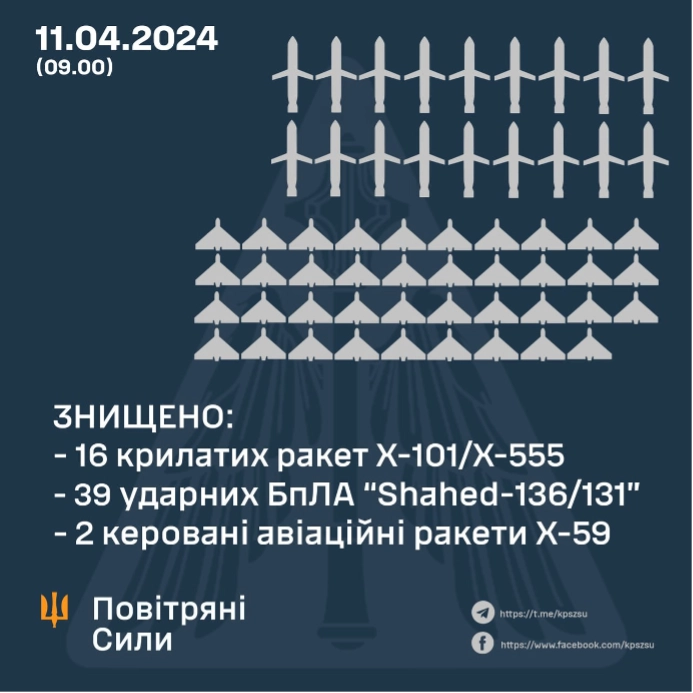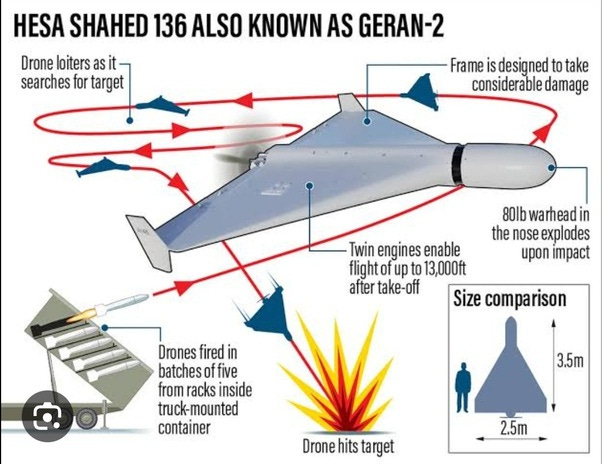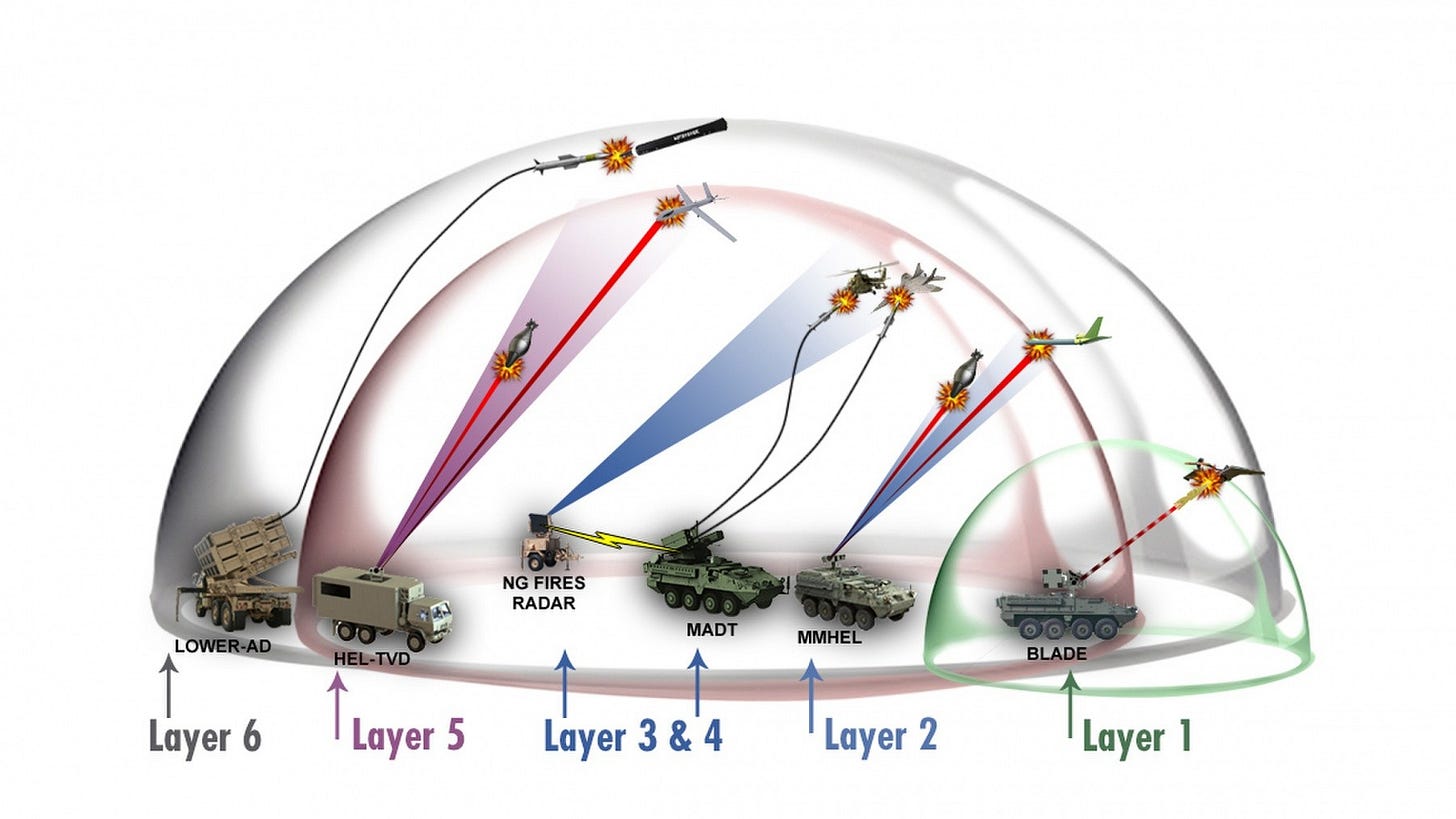Before delving into the concept of air defense system effectiveness, it is essential to elucidate the distinctions between efficiency and effectiveness. Per P. Drucker's insights, efficiency denotes "doing things right," while effectiveness signifies “doing the right things.” Efficiency is quantified by the ratio of effects to costs, reflecting the precision in execution, whereas effectiveness gauges the extent to which objectives are accomplished.1
The efficacy of a weapon system is measured by the degree of success anticipated in achieving its designated goals.
Effectiveness can be considered as a product of Availability (A), Reliability (R), and Capability (C). The effectiveness of an air defense system is gauged by its capability to fulfill predefined objectives and tasks within specific temporal and operational constraints.2
Effectiveness = 𝐴∗𝑅∗𝐶.
When we talk about the effectiveness of air defense, we are talking about certain margins that greatly depend on the specific system. There is no such thing as a 100% effective integrated AD system. Many individual components combined in a broad scope can yield some parameters and numbers of integrated air defense, but these numbers shall always be taken with reserve.
What is the reason for this reserve? Firstly, when an individual system is designed, one of the first requirements is to be able to hit the target with reasonable probability (“doing things right”). For the sake of exercise and to play with the numbers, the probability of hitting a target with one missile is broadly accepted in older systems as an average of 75%. Because of that, a typical target is engaged with 2 or more missiles, which increases the probability to 95-99%. What happened with that 1 %? Simply put, that is used as a margin, meaning designers will try to avoid that magic probability of 100% speaking in general but would rather use wording such as “likely,” “highly likely,” or “with the greatest probability.” These numbers are related to the design requirements and the proving ground test results. Combat situations are something different, and in this situation, random and stochastic events happen.
A target can be of many different shapes and flying envelopes. To simplify, hitting a big “fat” non-maneuvering target such as a transport or passenger plane that does not have any means of knowing that it is targeted can be almost 100%, but the probability of hitting a highly maneuverable, low-flying target with stealth characteristics can be as low as 5-10%. In any case, this crucially depends on the particular missile system and associated components. Launching 2 or more missiles per single target increases the probability of success.
Let’s put this into practice: After Ukraine gained independence, the country’s military inherited a large number of Soviet systems. For several years, Ukraine had the densest/strongest air defense in Europe, taking into account the sheer number of missile units per square kilometer. This parameter even surpassed the numbers that Russia had per square kilometer. Years of decline took a toll on the systems, and at the beginning of the Special Military Operation, Ukraine’s AD capabilities shrank but still (at least on paper) represented a formidable strength. During the ongoing hostilities, Ukraine has received a broad array of military supplies from the U.S. and other NATO allies. Still, the Ukrainian president (even after his official mandate has expired) made and continues to make urgent pleas (some call it “begging”) for additional air defense resources anywhere he can.
To understand why there is such demand for air defense, it's important to look at the types of air weapons that Ukraine faces and how air defenses work to counteract those threats. Now we are getting into the field of “doing the right things.” So, the factor Availability (A) is about how many systems are available at any given moment to any random strategic target.
Russia is using a wide variety of munitions against targets in Ukraine, such as short-range ballistic missiles, aeroballistic/hypersonic missiles, cruise missiles, and a wide variety of drones.
For the ballistic missiles (now everyone knows that these missiles are of Iskander type), the launch points can be detected by designated NATO assets, which are engaged 24/7. After the launch, ballistic missiles fly a predictable path and are easier to track. Information about their launches is promptly transferred to the joint Ukrainian & NATO teams and distributed to the tactical units. The same NATO assets can detect cruise missile launches, but trajectories are unpredictable. Compared to the “classic” ballistic missiles, they are much more difficult to detect and track.
In addition to the heavy stuff, loitering munitions (now legendary Shaheed/Geran type) are in wide use. Compared to ballistic and cruise missiles, they tend to be small weapons that are difficult to defend against. One of their capabilities is to fly and surveil a region of interest, gathering information before identifying a specific target to attack.
Last but not least, the new players, called Kinzhals and Tsikrons, entered the game. These hypersonic missiles are extremely hard to track and even harder to engage. Kinzhal is the older missile, but the Tsirkon is a completely new player. No matter how propaganda in Ukraine tries to downplay the significance of these missiles, their effect is obvious to anyone with a grasp of reality.
In addition, now formidable gliding bombs can be dropped from a distance and hit closer to the front lines, and for this, neither Ukraine nor NATO has an adequate answer.
The defense against all such air threats involves an integrated system of several elements.
Ukrainian integrated air defense (even degraded), with the help of NATO and using the remaining early warning radars, can detect the approach of missiles and drones. The much prized (unjustly) Patriot system, for example, can attempt to track Kinzhals. The other munitions, such as drones or cruise missiles, can be tracked by a dispersed network of additional radars.
Now, it is worth saying that not all of the territory of Ukraine is covered with radars, and as time passes and attrition takes its toll, less and less coverage is available, which means that the factor of “Availability” is, for some areas, very low. The majority of AD surveillance radars are designated for the major strategic locations and large cities.
Ukrainians are now conserving the remaining Soviet-era systems, combined with the western-manufactured and supplied systems, to defend the most critical areas. Remaining Soviet-era systems, no matter how reliable, are aging, and the lack of spares and even ammunition makes the factor of reliability (R) a bit smaller. One of the issues in this attempted integration is compatibility. Western-supplied systems (not surprisingly), after some time in operation, show signs of decreasing reliability. This makes the process of getting these two different “families” to talk and work together a complex effort. These two groups are of different breeds and do not have common elements. Western companies are trying to combine these systems and make them work together. One of the ideas is to use Western-made missiles on Soviet-made launchers. It may sound easy to achieve for those not in this field, but in practice, it is a hard, expensive, and consuming task. Assume that financing is not an issue (pending that the funds are allocated and not “disappeared” into the “stakeholders” pockets or “designated officials”). The major challenge is to use existing components and modify them to work for the “foreign” equipment. These activities may take years, taking into consideration the effectiveness of the Western business models. However, time is not on the Ukrainian side.
Ukrainian PR is supported by the so-called military experts in mainstream and social media, bragging about the large percentage of downed Russian munitions. The meaning is just in that – the PR. This brings us to the third factor “Capability (C). In reality, those percentages of 80-90% of downed drones and missiles are just illusory. On the best day, Ukraine can’t engage and hit more than 20% of incoming assets, and the reason for that has already been mentioned – the lack of AD systems, depleted ammunition stocks, Russian countermeasures, and attrition.

Let’s take a little detour and elaborate on the meaning of “air defense system.” An air defense system is a triangle based on equipment, people, and tactics. If any part of this fails or gets weakened, the whole triangle becomes unsustainable because one or more sides of the triangle collapse. Ukraine may engage foreign contractors (mercenaries) both in combat and support roles until a sufficient number of domestic crews are trained, but for that, time is of the essence (to increase “Capability”). To train a combat crew in all aspects of combat, years are necessary. This can be shortened with the foreigners (volunteers or regular military), but how effective they can be is another question. This is not Iraq, Gaza, Afghanistan, or Libya, where the opponent is not able to resist. The Ukrainian crews are facing very well-equipped, skillfully led, well-supplied teams. The game is switched. Even if, by some chance, the collective West decides to strip existing AD units in every country to the bare minimum level and send them to Ukraine, they can’t provide full protection for Ukraine simply because there is no valid means to replenish spent ammunition and equipment without seriously degrading western AD. Since manufacturing capacities were offshored, and due to bloated bureaucracies and corruption, the most the Western economies can do is to provide somewhat timely supplies of available means of AD for which Ukrainian leadership is begging worldwide.
For example, in the MSM, both NASAMS and Iron Dome are reported to be effective against drones and unguided rockets. However, these systems are an expensive way to defend against low-cost targets, and they could be overwhelmed by large numbers of drones. Directed energy weapons such as high-energy lasers are being developed and deployed to provide potentially more cost-effective approaches to neutralizing low-cost drones, but it will be a long time until the first operational unit is included in an AD network. This long time will be measured in decades.
What is important is that the enemy can significantly reduce the effectiveness of air defense by simultaneously launching salvos of multiple weapons. In practice, this means that an attacker can always overwhelm a defender if the attacker can launch more ballistic and cruise missiles and drones than the defender can effectively track, lock on, and intercept. The attacker can also use a variety of decoys to saturate the defense network. To counteract this, air defense should be multilayered, and neighboring batteries and battalions should cover each other. Mobility also plays a significant role.
As the war in Ukraine is a war of attrition, the number of missiles is going to decide the winner. In this category, Russia is beating Ukraine and the collective West 5-7:1. Ukrainian combat effectiveness is in steady decline. This is not an overnight process and will take time, but without major escalation, including NATO “boots on the ground” in full order, the outcome is inevitable.
Staff Writer. Effectiveness vs. efficiency: What you need to achieve both. [Electronic resource] / Smartsheet, available at: https://www.smartsheet.com/content-center/managing-work/effectiveness-vs-efficiency-what-you-need-achieve-both
Elshan Hashimov1,2, Elnur Khudeynatov, National Defense University, Baku, Azerbaijan Azerbaijan Technical University, Baku, Azerbaijan: METHODOLOGY FOR ASSESSING THE EFFECTIVENESS OF THE AIR DEFENSE SYSTEM
[i] Edited by Piquet (EditPiquet@gmail.com)
If you like the article (and much more articles regarding military subjects will come) you can buy me a coffee:
https://www.buymeacoffee.com/mmihajloviW








Nice explanation
thank you
continue writhing.
Thank you so much, for this yet another excellent article. I am learning so much from your writings.